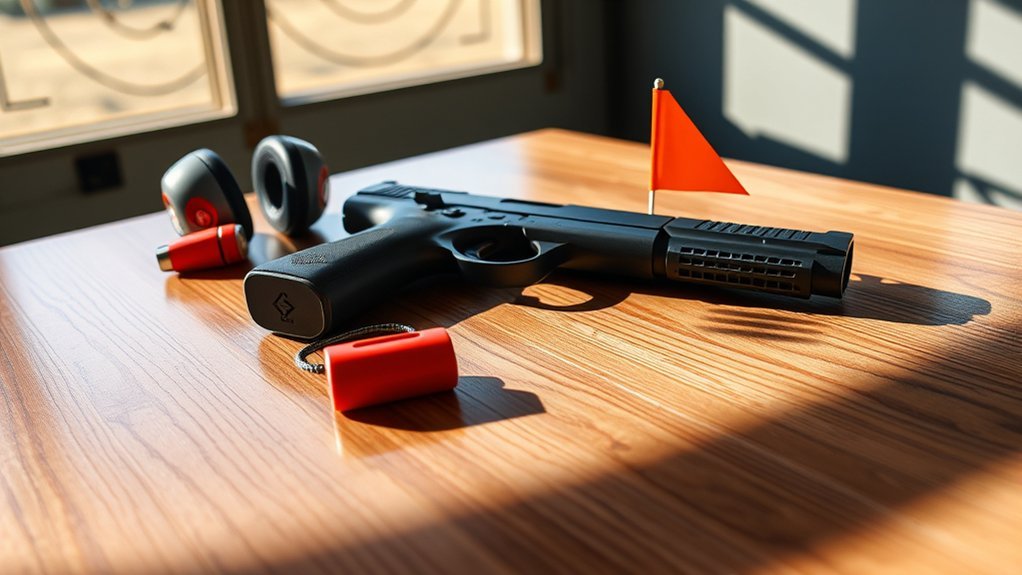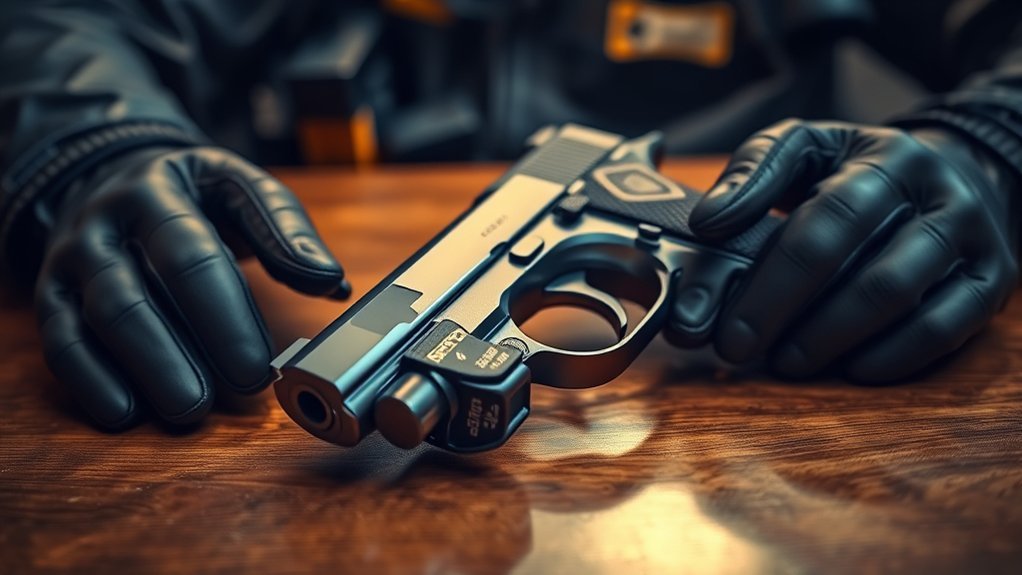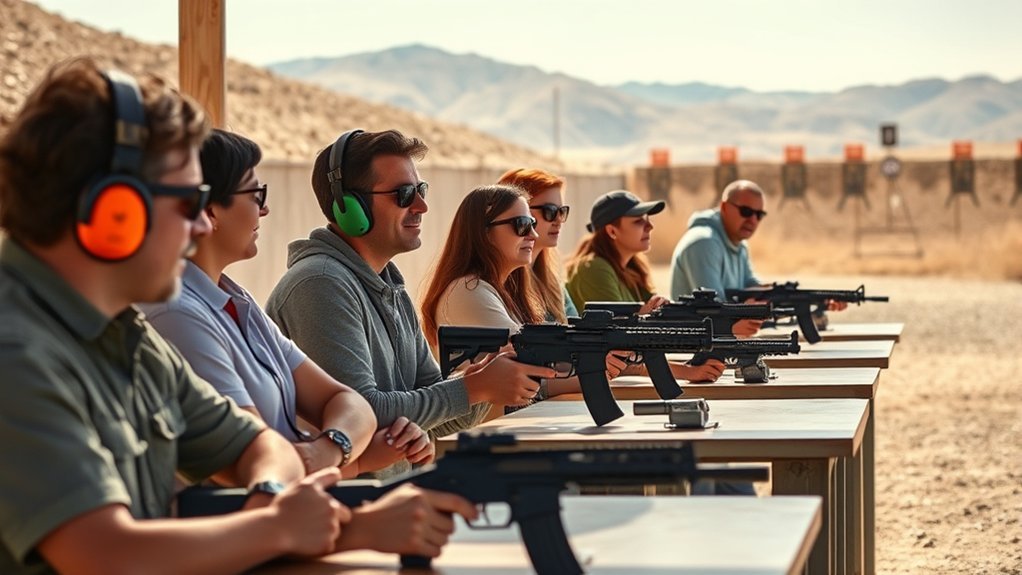When handling firearms, it’s vital to prioritize safety above all else. Always keep the muzzle pointed in a safe direction and guarantee the firearm is unloaded when not in use. Don’t rely solely on the gun’s safety features; they can fail. Being certain of your target and what lies beyond it is essential. As you explore these foundational rules, you’ll uncover the key principles that promote responsible gun ownership and prevent accidents.
Always Keep the Muzzle Pointed in a Safe Direction
One essential rule every beginner should follow is to always keep the muzzle pointed in a safe direction. This means directing it away from yourself and others to prevent accidental discharge and injuries. A safe direction considers ricochets and the risk of bullets penetrating walls, ensuring no one is in the line of fire. You need to develop the habit of controlling the muzzle at all times, even when moving or stumbling. Practicing situational awareness is vital during loading and unloading, as many incidents stem from unsafe handling. Remember that one-third of hunting incidents are self-inflicted injuries, often due to improper muzzle direction. By focusing on firearm safety, you minimize risks and promote responsible gun handling.
Firearms Should Be Unloaded When Not Actually in Use

Keeping firearms unloaded when not in use is essential for safety. Unloading a firearm immediately after shooting and before storage prevents accidental discharges. Always load your firearm only when you’re ready to shoot, whether in the field or at a range. When handling firearms, check the chamber, magazine, and receiver to confirm it’s unloaded before passing it to someone else or putting it away. Practice proper gun storage by keeping firearms and ammunition stored separately in secure locations to reduce unauthorized access. Never carry a loaded gun in a scabbard, holster not worn, or gun case; this increases the risk of accidental discharges. Always keep your finger off the trigger, and remember, common sense and safety precautions are your best allies.
Don’t Rely on Your Gun’s Safety

Even with firearms unloaded and stored safely, it’s important not to rely solely on your gun’s safety mechanism. Always treat every firearm as if it can fire at any moment. This mindset guarantees consistent safe handling. Never touch the trigger until you’re fully prepared to shoot, and keep your finger outside the trigger guard while loading or unloading. Safety mechanisms can fail or be unintentionally disengaged, so always prioritize proper handling practices. Open the action and visually inspect the chamber to confirm your firearm is unloaded. Maintain control by keeping the muzzle pointed in a safe direction. Always wear eye protection, and remember: never touch the trigger unless you’re absolutely certain you want to fire. Your safety depends on it.
Be Sure of Your
Before pulling the trigger, you must be absolutely sure of your target and what lies beyond it. Every firearm can shoot bullets that travel long distances, posing risks to unintended targets. Always keep your finger off the trigger until you’re ready to shoot, and assess the backdrop to guarantee safety. Use positive target identification to avoid shooting at movement or noise without certainty, as this can lead to dangerous accidents. Additionally, be aware of local laws regarding shooting areas to adhere to safe practices.
| Key Considerations | Actions to Take |
|---|---|
| Know Your Target | Identify it clearly |
| Beyond Your Target | Assess the backdrop |
| Muzzle is Pointing | Verify it’s directed safely |
Conclusion
In the world of firearms, think of safety as your guiding compass. Just like a sailor wouldn’t set sail without checking their maps, you shouldn’t handle a gun without knowing the safety rules. Each time you practice these principles, you’re not just preventing accidents; you’re building a habit that keeps everyone safe. Remember, a moment of carelessness can lead to irreversible consequences, so stay vigilant and treat every firearm with the respect it deserves.

